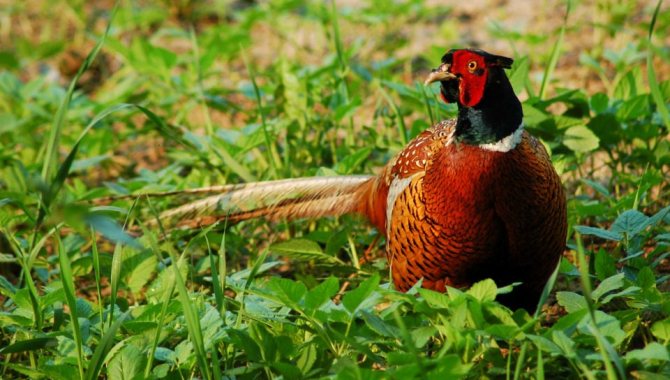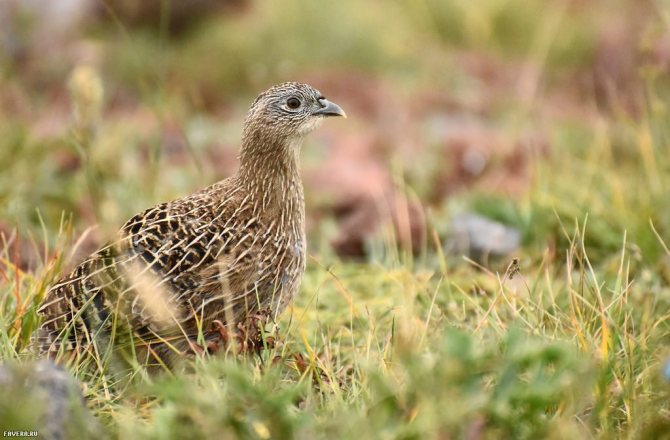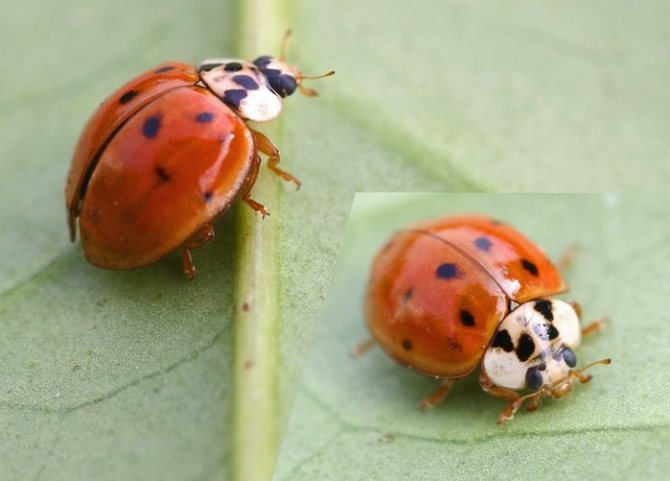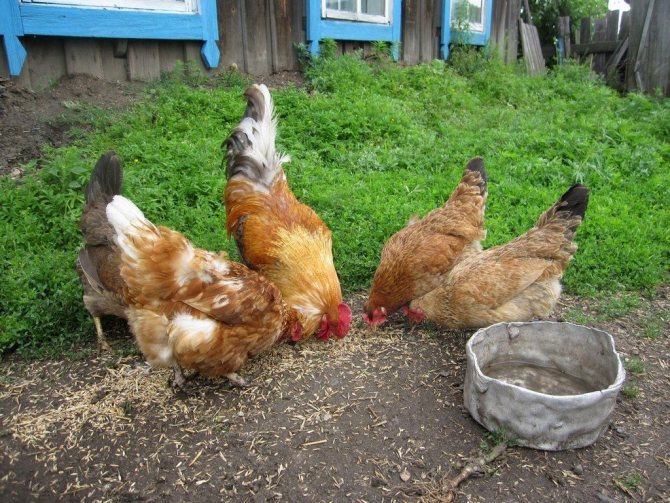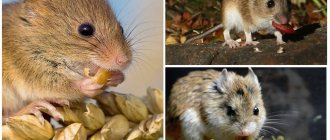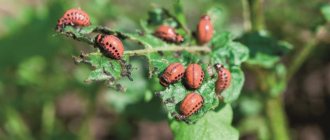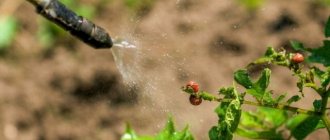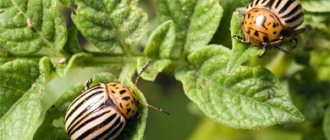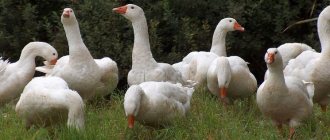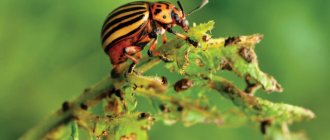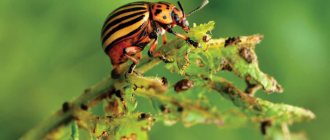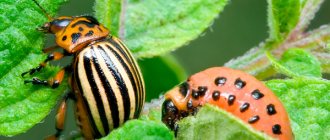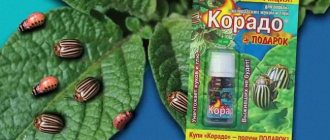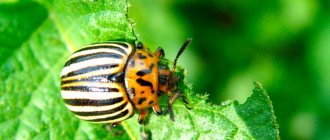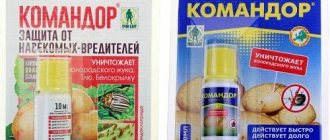Who eats the Colorado potato beetle? The main natural enemies of the pest
Who eats the Colorado potato beetle? In domestic latitudes, there are birds and insects that are natural enemies of the specified pest. For example, guinea fowls are known to eat Colorado beetles.
In the southern regions of the planet, there are many more animals that are able to help in the destruction of the parasite insect. However, we will not talk about this in this material, since their use in our conditions seems impossible. Let's consider who eats the Colorado potato beetle in the current climatic conditions.
Do guinea fowls eat insects
Do not be skeptical about the fact that guinea fowls eat leaf beetles, this is true.
Feathered "special forces", walking along the rows with planting of potatoes, will destroy not the adults themselves of striped pests, but their larvae and eggs.
It is enough to release birds into the garden 3 times - and there will be no trace of the garden pest.
Yes, and the main disadvantage is that Guinean chickens are very shy birds. It is enough for someone to scare them, and they immediately begin to bawl. Frightened, they can fly to safety and return home only in the evening.
Read more: Planting garlic in the fall before winter care and harvesting
Lacewing
If we talk about who eats the Colorado potato beetle from insect representatives, one cannot ignore the lacewing. In appearance, it resembles a small dragonfly of a light green shade.
The lacewing is a predator. The insect is known for its gluttony and unpretentiousness in the choice of food. The lacewing can help in the destruction of eggs and recently hatched larvae of the Colorado potato beetle. Due to its modest size, it is not able to affect adult, mature pests.
Insects, known in our area as hoverflies, are predatory flies. Like ladybugs and lacewings, sirphids are one of the main natural enemies of the presented pest.
Hoverflies do not reach the size of an adult Colorado potato beetle. Therefore, they are absolutely useless in the fight against large individuals. However, their distribution on the land plot during the formation of the larvae of the pest can significantly reduce its population.
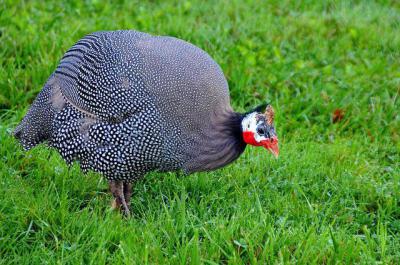
Who eats the Colorado potato beetle from other domestic birds? Pheasants do an excellent job with the task. For these purposes, they are walked on the personal plot in the first half of the summer. It was at this time that a massive increase in the parasite population was observed.
Breeding pheasants allows you to cope with the extermination of a number of other harmful insects, in particular, the larvae of the May beetle and the bear. At the same time, these birds are quite whimsical to the conditions of keeping and do not always survive in the conditions of harsh domestic winters.
Pheasants
Recently, it has become fashionable to breed pheasants on private farms, which also easily feast on Colorado. But this bird is not fully domesticated, half-wild. And dear too. Therefore, hardly anyone wants to release from a closed enclosure into a potato field to destroy the pest.
Even if she perfectly copes with ground pests, with beetle and bear larvae. It is more prudent to use the collected beetle as complementary food for feeding an adult bird.
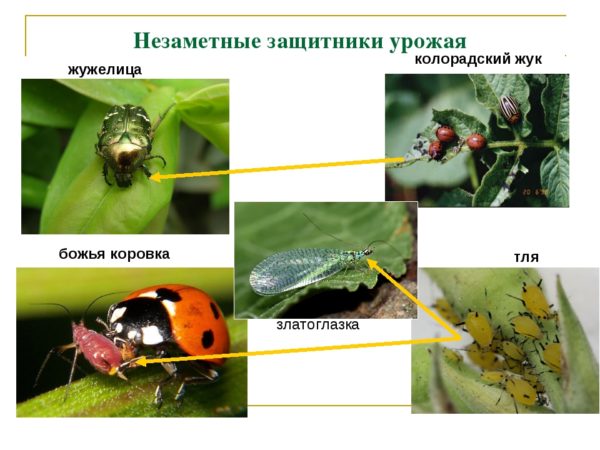

If the potato field is fenced in, and the pheasants are accustomed to returning to their aviary by their chicks, then you can try to get rid of the Colorado potato beetle in such an exotic way.
Of the birds found in the wild in Russia and capable of eating the Colorado potato beetle, such representatives of birds are noted:
- cuckoos;
- hoopoes;
- raven;
- bluethroats;
- starlings.
Of these, only the latter can be attracted to the sites by hanging a birdhouse. But these birds settle in groups, therefore, at least a dozen nests are made for them at the same time.
Professional agronomists are convinced that information about the eating of the Colorado potato beetle by birds living in the middle lane has not been verified and is unlikely to be true. Feathered big lovers of ripe berries and mistakenly confuse red larvae with them.
Important! Saving plantings from the Colorado potato beetle, you can miss the harvest of strawberries and cherries, which these birds are very fond of.
Can domestic chickens be used to kill the pest?
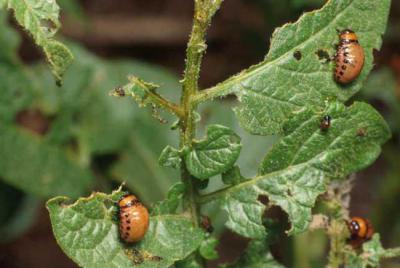

It is necessary to teach chickens to eat an insect from an early age, when the chickens reach 3-4 months. During this period, the favorite bird food must be mixed with the larvae of the Colorado potato beetle. Thus, chickens will have not only a visual, but also a gustatory association of the pest with food. Subsequently, the prepared chickens will independently move through the beds, pecking up parasites from the tops.
Natural enemies of the Colorado potato beetle: who eats them
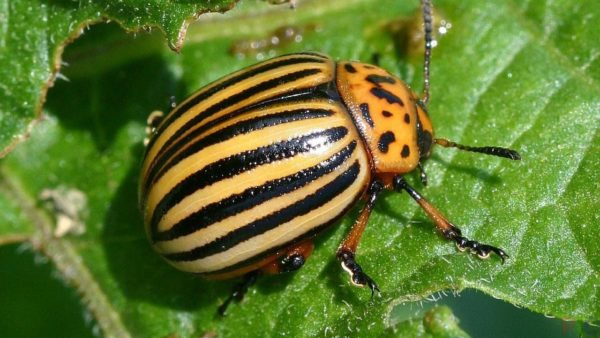

All gardeners have at least once encountered such enemies of the potato as the Colorado potato beetle. You can fight them with the help of chemicals, or you can make natural enemies of the Colorado potato beetle.
Related article: Zircon for potatoes: instructions and dosage of the drug
There are not so many enemies of the Colorado potato beetle, but you should not sit back and wait until this pest spoils the entire crop. This article will focus on those birds and insects that eat the Colorado potato beetle.
Natural enemies of the Colorado potato beetle
Today, its natural enemies can help in the fight against Colorado beetles. The insects that eat this beetle include: ladybug, lacewing, sifrid.
As for birds, they include:
- guinea fowl;
- pheasants;
- partridges;
- turkeys.
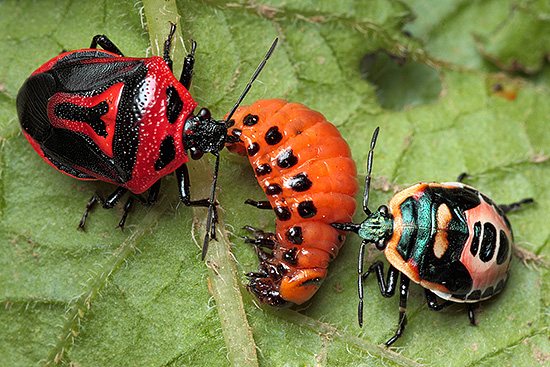

ladybug
The ladybug is one of the most common insects. Gardeners can say gratitude to her for the destruction of the Colorado potato beetle, aphids and many other pests that very often wield in gardens and vegetable gardens. But, despite this, ladybugs will only help in the early stages, because they only eat eggs and small larvae. As for the adults, they do not attract ladybirds.
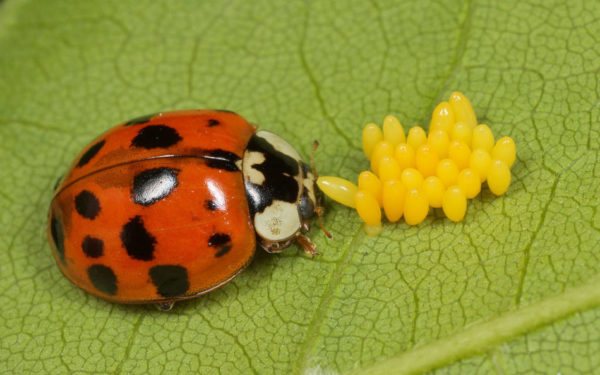

Lacewings
Lacewing is also an insect that destroys the potato pest. This insect looks like a small midge. And it destroys not only the Colorado potato beetle. But, like the ladybug, the lacewing eats larvae and eggs. But you need to fight adult beetles using other methods.
These insects are also called hoverflies. These small predatory flies are able to fight the larvae and eggs of the Colorado potato beetle. These flies are small in size, but will be very useful in the early stages.
As you can see, all insects, which are natural enemies of the Colorado potato beetle, will be useful only at the very beginning, until adults are obtained from eggs and larvae. If you skip this moment, then the presented insects will be useless.
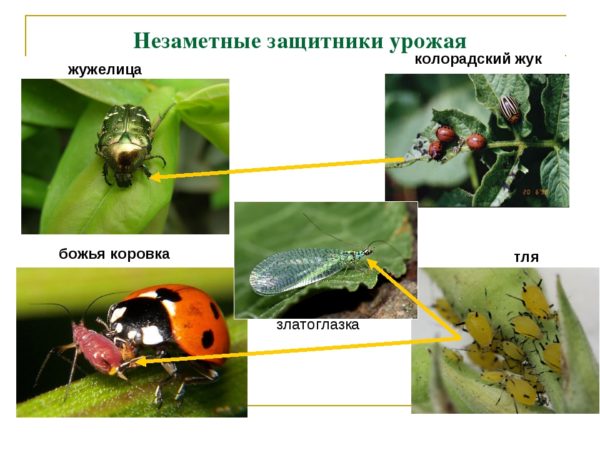

This bird is domestic. She is not whimsical in leaving. They tolerate different temperatures well. For them, it is not scary not -50, nor +40.In addition, guinea fowls lay eggs that are hypoallergenic. They can be eaten by children, as well as people on a diet. These birds do not rake the ground, but take out the larvae from the plant. The size of these birds is small, and they feast on Colorado beetles, they love, so they are not even afraid of the population of beetles. Guinea fowls eat both larvae and adult beetles. In addition to killing pests and laying eggs, these birds also provide tasty meat.
Important: if the site is 10 - 15 days, then 3 - 4 guinea fowls will be enough for this area to fight the Colorado potato beetle.
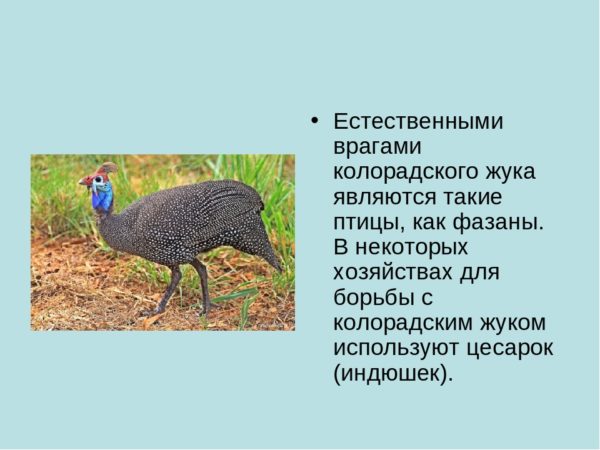

Pheasants and partridges
Very often, partridges or pheasants can be seen on the plots of summer residents. They help get rid of beetle larvae, and more. Like guinea fowls, these birds are undemanding in care and are not afraid of minor violations in the maintenance and care. Pheasants sometimes have free range on the site. But they need to be monitored, because, in addition to the fact that they can feast on pests, they can also trample the plantings, damage the crop.
These birds also eat Colorado potato beetle larvae, but require special care. They can be subject to various diseases. Therefore, when growing them, more care and attention is required.
Poultry walking should be carried out in June, because it is at this time that the beetle larva is actively developing.
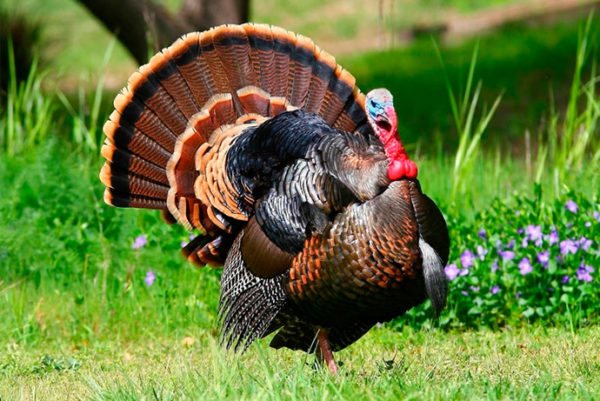

Origin
The main pest of nightshade crops: potato, tomato, eggplant, pepper is the Colorado potato beetle.
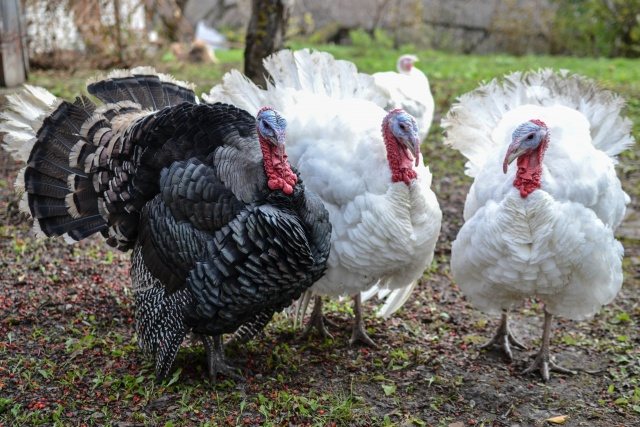

For the first time, this insect outside Mexico was talked about in the 19th century. In the US state of Colorado, this pest has caused significant damage to potato plantations.
The more widely the potato culture spread around the world, the more pests appeared in the fields. This is due to the beetle's extraordinary ability to adapt to changing environmental conditions.
The length of the insect is 7-16 mm. White wings are inscribed with longitudinal black stripes. The abdomen, legs and head are brown-orange in color.
Lays up to 160 eggs. They are bright orange, oblong, 0.8-1.5 mm long. The larvae are inactive, yellow or orange-red, with rows of black dots on the sides and a black head.
Nature has endowed the Colorado potato beetle with extraordinary immunity, which contributes to its adaptation in one or two generations to get used to climate changes, not to react to poisonous agents.
Adult insects hibernate in the soil in the fields where they fed in summer. The depth is 15-20 cm. They emerge from the ground when the soil around them warms up to 14-15 ° C. At this time, the crops that the beetles were feeding on are already covered with green leaves. Therefore, pests immediately lay eggs on the back of the leaf.
Adults and larvae cause damage to nightshade plantations, completely eating greens, leaving only veins on the plants.
After 3-17 days, depending on the temperature, larvae appear. They feed on potato leaves and grow vigorously. They feed for 15-22 days, then go into the soil and pupate.
After 7-8 days, adult insects hatch from pupae. Depending on the climate, from 1 to 3 generations of offspring can develop.
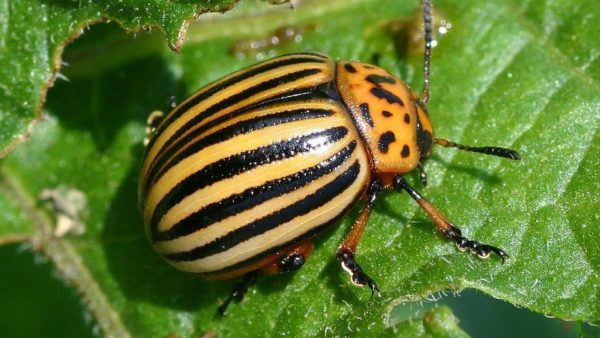

It is difficult to destroy a pest in your own garden. Adult beetles travel tens of kilometers in search of food. And it is not difficult for them to move from the neighboring garden to the vacant garden bed.
In the days of collective farms, pickling of potato fields and private gardens was carried out jointly. It is now impossible to organize such an event in one day. And the harm from pesticides is no less than from the Colorado potato beetle.
The massive spread of insects, low susceptibility to chemical poisons, prompted scientists to look for its enemies in nature.
Which bird eats the Colorado potato beetle
From the above, one can answer the question of what kind of poultry eats the Colorado potato beetle. But in addition to domestic birds, other birds also eat the Colorado potato beetle. These include:
- ravens;
- starlings;
- sparrows;
- hazel grouse;
- cuckoos.
Related article: Cardinal preparation for potatoes: instructions and dosage
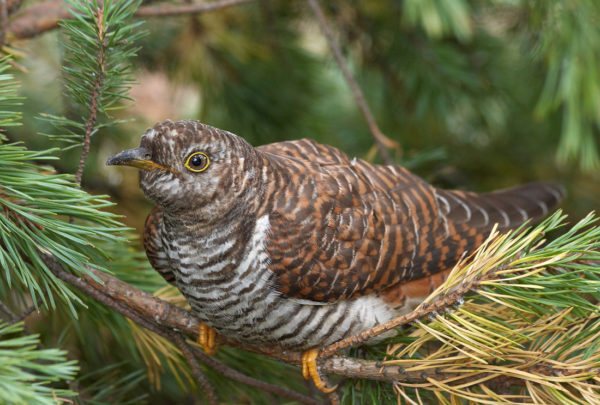

Is it possible to use chickens against the Colorado potato beetle
In order to destroy the Colorado potato beetle, ordinary, well-known chickens began, they must first be taught this. If this is not done, then the larvae will remain on the potatoes.
In order for chickens to get used to fighting Colorado beetles, you need to start teaching them at the age of 3-4 months.
The tutorial is pretty simple:
- First you need to crush the beetle larvae and add them to the chicken feed.
- At the second stage. It is necessary to add potato tubers or tops to the feed. So, chickens will get used to the potato smell.
- After a week, the number of supplements can be increased.
- When the chickens get used to the potatoes and larvae, they can be safely released to the site.
As you can see, chickens can not only be used against the Colorado potato beetle, but it is also necessary, most importantly, to accustom them to this.
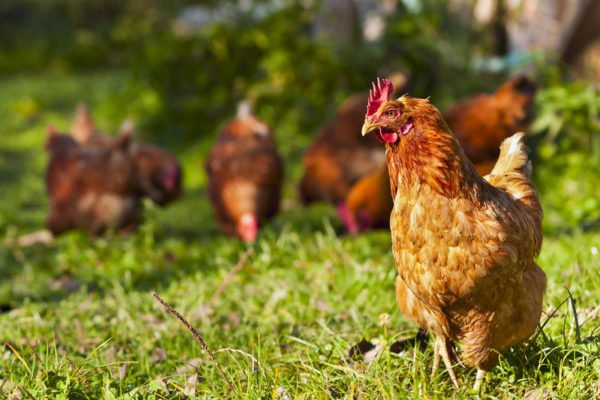

“We have been fighting the Colorado potato beetle for a long time using various chemicals. All this helped with varying degrees of success. Then, they decided to have a guinea fowl, at first they thought about turkeys, but abandoned this idea, because they need to be looked after more and more often. Guinea fowls are not whimsical, besides this, they do an excellent job with the duty assigned to them. It's just that they need to be taught to eat beetles, but this is not difficult to do. We really liked this option, because in addition to getting rid of beetles, we also purchase food. Eggs and meat are very tasty and healthy. "
“Not so long ago I also decided to get this poultry, but no one told me that, having decided to get a guinea fowl, they need to clip their wing wings, because they have not forgotten how to fly in comparison with chickens. Otherwise, everything is fine, these birds practically do not get sick and do not require special and constant care. "
“Poultry certainly helps with pest control, but I like other methods better. When planting potatoes, I usually put beans in the hole, 1 - 2 things. This scares off the Colorado potato beetle well. And I use domestic birds, be they guinea fowl or chickens, as an additional tool. "
Free range of birds
If a summer resident starts guinea fowls or turkey poults on his site, then you can release them to graze freely from the age of 3 months. Do not be afraid that they will harm the site, they peck insects and do not tear the ground at the same time.
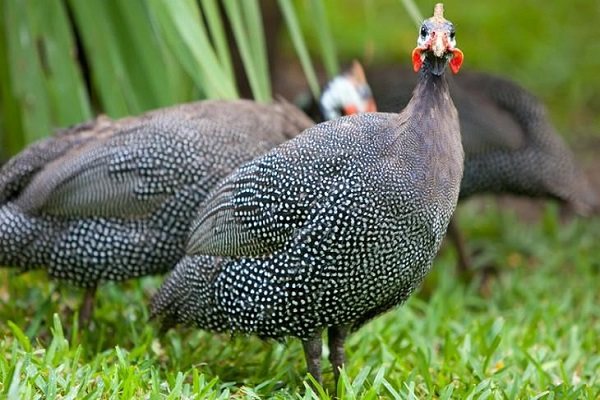

It is imperative to clip the wings, because these birds are capable of flying.
An important condition according to which these particular birds are kept everywhere in Russia on farm plots and personal lands is their adaptability to harsh weather conditions.
Growing potatoes involves constant pest control. Every gardener wants to add as few chemicals as possible. Many, worried about their own health, are looking for ways to solve this problem. Growing a house of birds that feed on insects is a great way out of the situation.
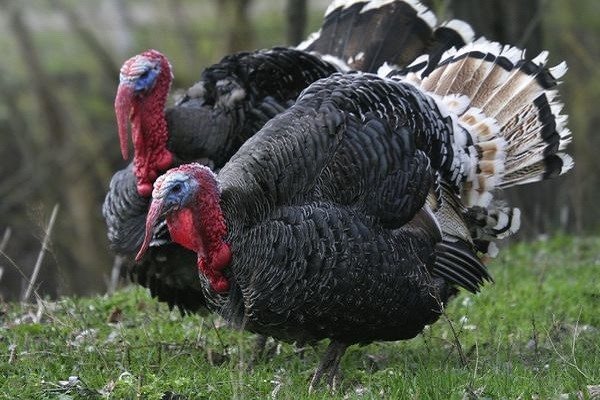

Which bird can help
The natural enemies of the Colorado potato beetle are many insects that are found in our country. These insects include, for example, the lacewing. But the use of insects to combat this pest is impractical, since there will still be more harm from them, and it will not work to breed them.
But in addition to insects, several species of birds live on the territory of the CIS countries, which in this situation can act as assistants in the fight against the Colorado potato beetle. Which bird is eating it? The list of such birds that live on the territory of our country includes:
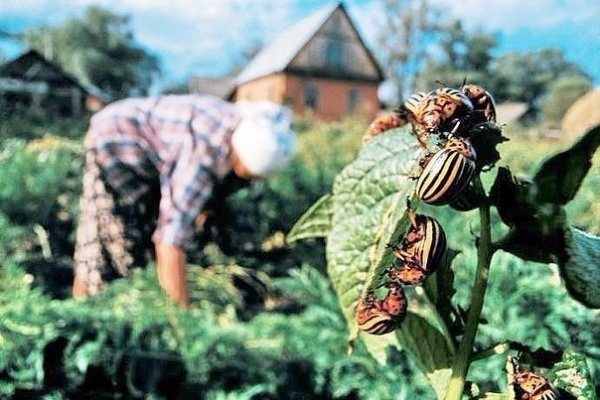

All of the above birds are domesticated and therefore can be used to destroy the Colorado potato beetle in vegetable gardens. In this situation, the most effective breeding is considered guinea fowl.Guinea fowl is a poultry related to chickens, has tasty meat and is absolutely unpretentious in breeding. This "exterminator" of the Colorado wide insect is grown in our country for the following reasons:
- dietary meat;
- guinea fowls lay hypoallergenic eggs. Therefore, they are great for feeding small children;
- good tolerance to any weather conditions, for which our country is so diverse, including even the winter period;
- resistance of birds to many diseases. Unlike ordinary chickens, guinea fowl get sick much less often. The most common are diseases caused by spoiled and moldy food;
- can eat many harmful insects, including the Colorado potato beetle.
Related article: Preparation "Bunker" for potatoes: instructions and dosage
Another advantage of these birds, along with turkeys, is that they do not rake the soil in search of food. Such a bird eats beetles and their larvae from the tops. Thanks to this, you should not worry about the plantings of cultivated plants.
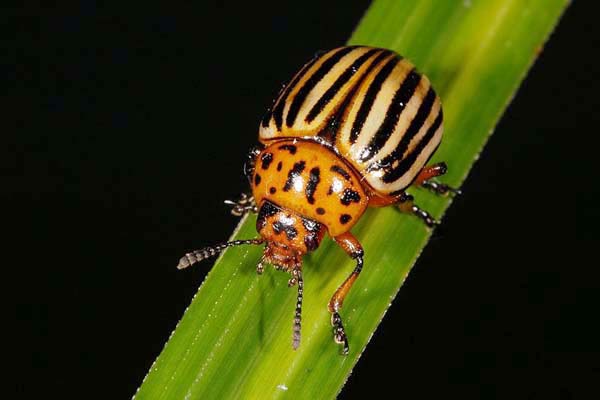

For these reasons, the use of guinea fowl to combat an insect pest is considered the most optimal. Keeping them in the open range will allow you to significantly reduce the population of harmful insects in the garden. Guinea fowls recognize pests by their specific striped coloration, which stands out against the background of green tops. For them, the larvae are a real delicacy that fully satisfies their nutritional needs. Indeed, in fact, all insects contain proteins and pure protein.
Walking guinea fowls or other poultry to destroy the pest population should be done at the beginning of the larval development period (first half of summer). The partridge and pheasant also eat the larvae of this pest. They, like guinea fowls, will also do an excellent job with the task. When using them, an effective fight against a number of harmful insects is possible. At the same time, gray partridges are more preferable, since they can be grown in all weather conditions. By the way, therefore, they are widespread in the wild.
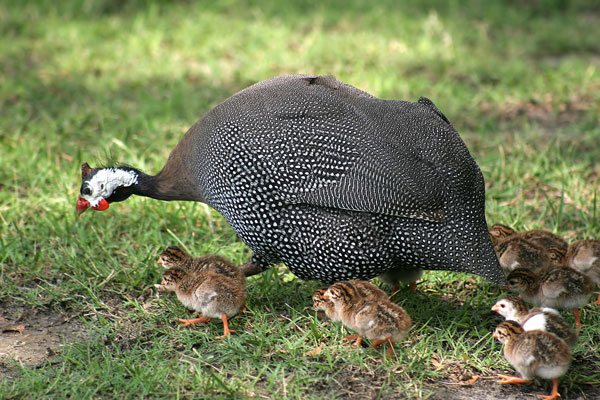

Turkeys, after guinea fowls, partridges and pheasants, occupy the fourth place in the "rating" of beetle killers. But the disadvantages of breeding them include the fact that they are prone to various diseases and have a difficult disposition. Turkeys are prone to depression, which is manifested in the refusal to feed.
All of the above poultry perfectly withstands temperature fluctuations in a fairly wide range - from +30 to -30 degrees.
The use of birds allows you to effectively reduce the population of beetles and their reproduction in the future, and besides this, you can also get food such as meat and eggs.
In addition to the above domesticated species, wild birds can also reduce the population of these pests to some extent. These include:
As you can see, there are fairly simple methods of control and containment of the Colorado potato beetle population.
About exterminating insects
In addition to birds, insects can also get rid of the potato pest. Colorado beetles feed on ladybugs, lacewings, sirphids, or as they are also called hoverflies.
Ladybugs act as a destroyer of larvae and egg clutches of the leaf beetle. Due to their small size, lacewings and hoverflies are also unable to affect adults. But, despite this, they can significantly reduce the number of harmful insects during the formation of larvae.
Read also Leucanthemum maximum sweet daisy cher new
However, it should be understood that it will not be possible to completely get rid of Colorado beetles by attracting birds and insects to potato fields, but it is quite possible to control their numbers within reasonable limits. It should also be borne in mind that “chemical artillery” is not used to fight the enemy, which is also an important advantage of this method of fighting.And besides, natural enemies will cope with the pest much faster than doing it manually.
It is very important for gardeners to know who eats and thereby destroys Colorado beetles, because they are able to destroy entire plantations of potatoes and other vegetables, actively eating their foliage. At the same time, potato leaf beetles reproduce at an incredible rate, and their ability to survive in adverse conditions is quite high.
How to train chickens to eat beetles
Poultry and other types of birds bred in the household can act as insect killers when they are taught to do this, since they still rarely guess to peck the larvae on their own. The bird eats them purposefully only after some preparation.
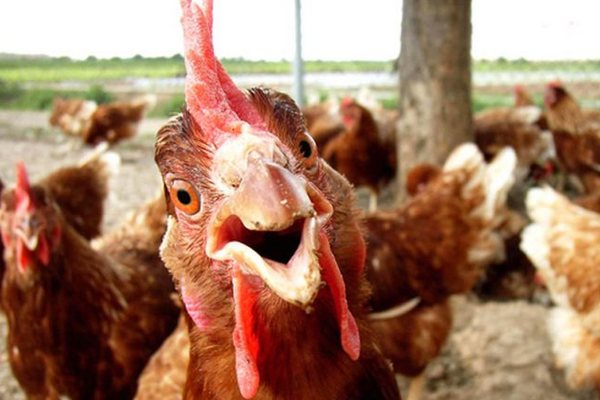

It is necessary to start accustoming future exterminators to eating beetles at the age of three to four months. Although some experts recommend it is for domestic chickens to start training at three weeks of age.
At this age, it is necessary to add crushed larvae to the feed in order to evoke a visual association in the wards. In the future, they themselves will move around the garden, pecking up parasites from the tops.
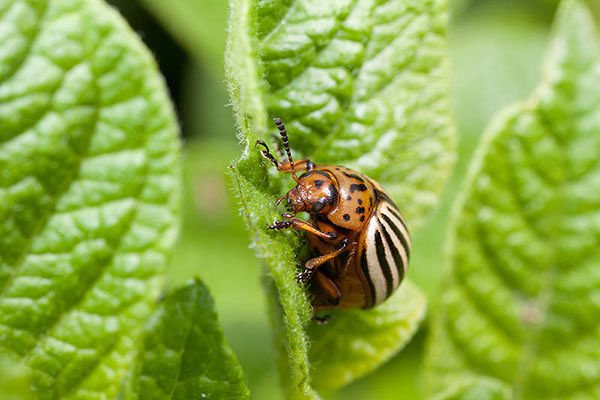

You can also mix chopped potato tops and some grated potatoes into food. This will teach the hens to smell the potatoes. One week after the start of the training process, their dose in the feed can be increased. At the age of three months, your wards can already gradually begin to release into potato plantings.
As you can see, it is quite easy to accustom birds to eating the Colorado potato beetle. And there will be a lot of benefits from this.
Poultry training method
Chickens begin to actively destroy the Colorado potato beetle after training.
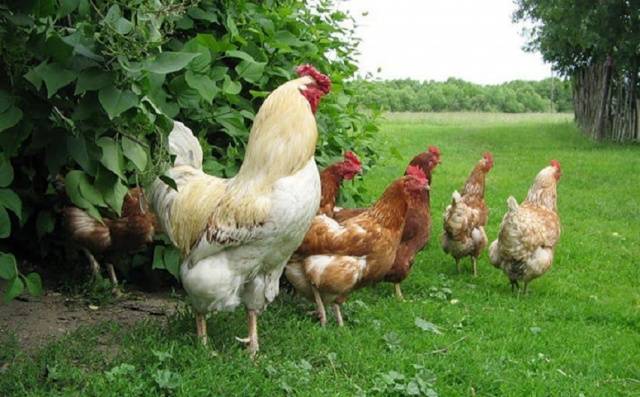

Otherwise, they are indifferent to the larvae and do not peck at them. To achieve a positive result, young animals are taught at the age of 3-4 months. The learning technology is quite simple:
- First, crushed Colorado potato beetle larvae are added to the feed. This is necessary to achieve associative visualization in domestic chickens and other poultry species.
- Then chopped potato tops or grated tubers are mixed into the usual food so that the chickens get used to the smell.
- One week after the start of training, the dose of supplements is increased.
- As soon as the bird gets used to the larvae and potatoes, you can release the natural exterminators into the garden. They themselves will peck pests from plants.
This is necessary to keep the poultry healthy.
How chickens easily cope with a pest after preparation can be seen in the video:

